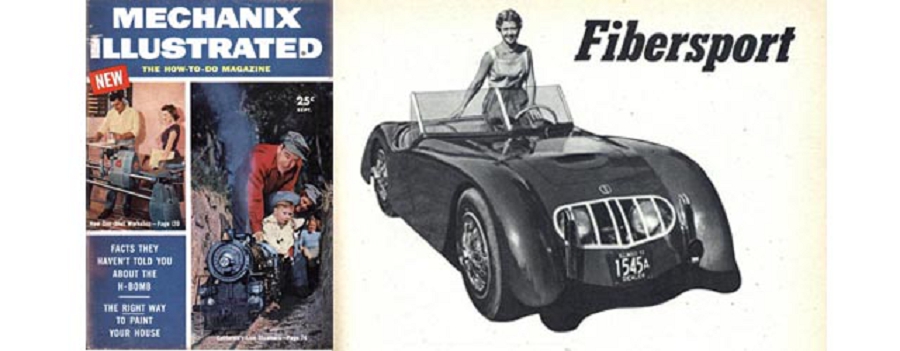
Hi Gang…
Buy it, build it, or something in between.
That’s what John Mays and John Burmaster of Bloomington Illinois offered when interest in their custom designed sports car – “The Fibersport” – heated up and others wanted to drive one too. The heritage of Mays and Burmaster’s car starts several years before the debut of their fiberglass bodied “Fibersport” in ’53 as you’ll read in the article below.
Let’s see what Mechanix Illustrated had to say about this car back in early ‘54
Fibersport
Mechanix Illustrated: April 1954
That necessity is the mother of invention has been proved once again by John Mays and John Burmaster, proprietors of a garage in Bloomington, Illinois. Three years ago, Mr. Mays, with his partner’s assistance, began running a Crosley Super Sport in competition. Months of tedious work were devoted to modification of the compact little power plant and the results were encouraging.
After what amounted to a trial run in a race at Vero Beach, Florida, the car took a first in its class in the Janesville Airport Race. Next came Elkart Lake and the hot Crosley turned in another good race but not quite good enough. It was decided then and there that since the engine had already been hopped up the next logical step toward really championship performance was to modify the frame and build a new, lighter body. This was the birth of a brand new American sports car—the Fibersport.
The first step was to rebuild the chassis and suspension, the major change in this department being the addition of 15? wheels, to replace the stock Crosley 12-inchers. This had the effect of changing the overall gear ratio without actually requiring a new rear axle. Once the chassis was completed, work began on the design and construction of a new body. Since Fiberglas had been decided upon as the lightest, strongest and most practical material for this purpose, clay molds had to be built of each suggested design.
Before a Fiberglas body can be molded, a full-scale plaster-of-Paris mock-up and a female mold must be constructed. This is a tedious job and on the Fibersport body it involved months of heartbreaking, as well as backbreaking, labor. The plaster mock-up cracked and was repaired time and time again but persistence finally won out and it was completed.
From this full-scale model the female mold was made and the’ actual car body, in turn, was fabricated. The completed Fibersport body was truly a thing of beauty. Not only did it have pleasing lines but the quality of the finish was remarkable. Such refinements as molded-in lips on all body openings, floorboards and bucket seats molded into the body proper for added rigidity, and color cast into the resin topped off with several coats of hard lacquer—gave a touch of quality seldom found on cars of this type.
Once the body was bolted to the chassis, performance tests were run off and the little car turned out to be a real bomb. With a top speed well in excess of 100 mph, it accelerated to 60 mph from a dead start in just a bit over 11 seconds. Total weight came out to a mere 1,100 lbs. The resulting low power-to-weight ratio was, of course, responsible for a large portion of the Fibersport’s startling performance, but some of the credit must go to the wonderful four-speed synchromesh Morris Minor transmission that was employed.
This enabled the driver to take full advantage of the engine’s extensive torque and rpm range, thereby eliminating “dead spots” in acceleration curves. The Fibersport picks up smoothly and briskly from zero right up to top rpms. For touring use it will cruise nicely at 70 to 80 mph, if you are so inclined.
Soon after the vehicle took to the streets around Bloomington, people began inquiring about it, trying to buy it. The general response was one of such enthusiasm that Mays and Burmaster decided to form a company and build not only the completed car for sale but also the Fiberglas bodies alone, to fit on other specially designed chassis.
If buying the body separately appeals to you, you have still a further choice; it is available either in standard form or as a competition body. The latter differs from the stock model in that it has only one door, no trunk, and is usually of four-ply construction instead of five. The completed Fibersport car is available for about $2,850, fully equipped, and the bodies sell for from about $870 for the standard version down to $580 for the competition job. These bodies are designed to fit the 85-in. Crosley chassis.
Early models of the Fibersport have competed with considerable success in a number of important road-racing events during the past two years and as more and more of them are produced it becomes increasingly obvious that they are just the thing for the enthusiast who wants a dependable, low-cost, all-American sports car for touring and competition.
Summary:
Good news gang!
Several Fibersport cars have turned up over the past few years and it appears the molds for this car may exist too. I hope to connect with the Fibersport enthusiasts in the near future, and perhaps with their help we’ll document more history and detail of one of the few Midwest fiberglass sports cars of national renown: The Fibersport by John Mays and John Burmaster.
Hope you enjoyed the story, and until next time…
Glass on gang…
Geoff
——————————————————————-
Click on the Images Below to View Larger Pictures
——————————————————————-

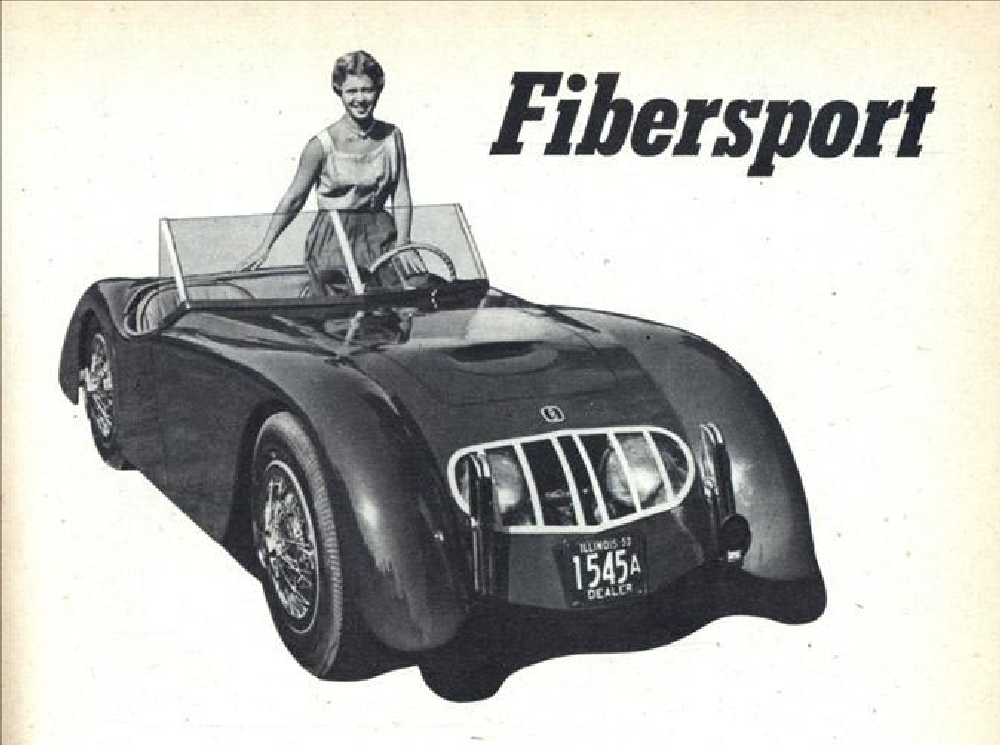

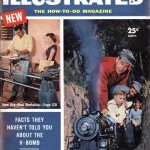
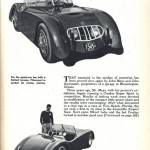
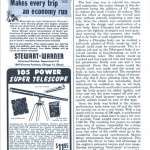
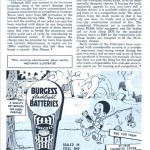
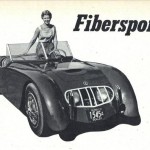
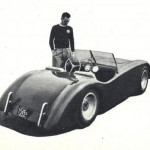
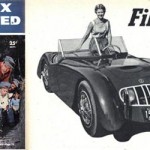
dear larry my name is jon edwards and have talked to you in the past about the fibresport mold that i have resurected and sucsessfully pulled a body from it years ago.the crosley chassis which came as a package deal is so bad i desigined and built a left hand drive version using early tr3 front suspension mga motor trans and narrowed rear axle.i have gone to vrg drivers school in a borrowed elva and am looking forward to participating in upcoming events at the new dominion raceway in va.
George,
I am the owner of 2 Fibersports H-Mod Race cars.
SIAM, built by Purdue engineering students and raced until 1964, put in a barn in MI and then moved through hands in CO, TX then to me with the help of E-Bay. Restoration started but halted due to Vintage racing FF but will get back to it soon.
Fibersport/Crosley Hotshot found in the Mid West with no racing history provided. Upon getting it from IA it was apparent that it “maybe” one of the original John Mays “Factory” cars per Sandi Fodi, based on the fact that the Crosley Frame is completely drilled full of 1 1/2″ holes. Unfortunately the body appears to be “bobbed” maybe from race damage. But the lines match the SIAM. This car is awaiting its turn in the shop.
Looking for the molds for the flat sided Fibersport body and any history of the cars.
Larry Santa Fe, NM
Update. WE have concluded phase one of the preservation of a 1954 SIAM H Mod race car. It is a custom chassis with a Fibersport body and Crosley engine. A picture of the car getting ready to go into the trailer maybe found at http://www.lchrestoration.com. Woul post here not sure how.
Larry Haynes
John Mays was my grandfather and I probably spent more time in this car, just sitting, than some who did the actual driving (according to my Mom). It’s unfortunate that that particular car has fallen to a state that it probably will never see restoration. Now, every time I catch the faintest whiff of fiberglass and it brings on a flood of memories, sitting hours in the cockpit of a real race car and dreaming of the races to be won. Thanks for the article.
Richard, you mention a car sitting waiting for restoration? I have 2 Fibersports and would to keep track of all the Fibersports. Could you let me know what you can of that car?
Larry Haynes
Santa Fe, NM
Larry,
The last I heard was the car was beyond being able to restore as it had sat outside in the Florida swamp and the frame had completely rusted away. As for the body, I think a grandson of John Mays, son of Bill Mays may still have it. If you contact Sandi Fodi (sfodi10@charter.net) who is the daughter of John Mays, she may be able to get you more information.
Richard, Thanks for the reply. Exchanged E-mails with Sandi in the last few days. Hope to see more history on Fibersport in the future.
Larry
Hello Richard. I just found this thred nd have been looking for references to the 1954 race car built by Purdue University engineering students. Originally called the ERMA it had a Fibersports body was renamed the SIAM after changing hands and is now owned by Larry Hayes of lch restorations (message below). There have been several references to the fact that he Fibersports-bodied car was their second attempt and I’m trying to learn about their first. I have a partially built crosley powered roadster that may be it (but I doubt it). Do you have any recollection of the Purdue project and if there was first car?
thanks for listening.
Hi Jim,
I forwarded this email to my mother (oldest daughter of John Mays) as she may be able to answer your inquiry. Being that I was born in 1954 I have little knowledge of the history of the car. Sadly, the oldest son of John, Dave Mays, has passed away and with him the complete history of the car as he also raced it during its hay day.
dear jim my name is jon edwards i still have the mold for the early flat sided fibresport and have pulled a body out years ago.l also have what is supposed to be a watkins glenn chassis which is very bad ,but possible to restore.also i have an early crosley hot shot made without doors.please call me at 301 862 3583 and leave message or email towncreekjon52@gmail.com .sent 1 2 2022 .
I was born and raised in Bloomington, IL. I first met John when he was working out of the Oakland Ave shop. I lived across the street from the Oakland Ave grade school. I was in his shop when he was building the first fiberglass cars. I always respected John and his ability to be a winner. Lots of people laughed at his attempts, but he was a determined WINNER. IMO.
I have often wondered about John and where he lives now. I am 75, I would guess John would be 85 – 90 today. Wasn’t he involved with developing a fiberglass race helmet early on?
Enjoyed reading this posting.
Dale L. Smith
Indy
Great post and beginning of the story Geoff.
Looking forward to future stories about this brand, as it is a neat story, and one that few know, even people living right here in Bloomington/Normal, IL.
Maybe we can convince some of the past and present Fibersport owners to come back to Bloomington, IL and bring their cars for a “reunion.” I know the perfect place/show for this to occur at too. It would be great for the show and the Fibersports.
Awesome little car, any idea how many were made?
Daughter of John C. Mays – Fibersport Crosley
There were 15 Fibersports made. Typically they were blue, with the number 41 on the car John Mays was racing.
Mays belonged to the Chicago SCCA and held SCCA H-Mod wins in 1955 through 1958 in the midwest.
He met with Fagan, invented a ram-induction manifold that put the Fibersport as Champion out of 39 Races – 36 Firsts, 5 Seconds, 1 Sixth, 1 DNF. Early races were in what others term “Flat Sided Body Fibersport”, but our term was only Fibersport. Fiberglass body, Crosley Engine
I will soon publish the article he wrote about his experience in “The Seven Golden Years”.
Sandra Fodi
Dear Sandra,
sorry to disturb. I have a chassis that I need to identify and looks alike a Fibersport but I need to be sure. Who is able to support me in this matter?
Kind regards
Giuseppe Bellando Randone
Very cool Crosley conversion.